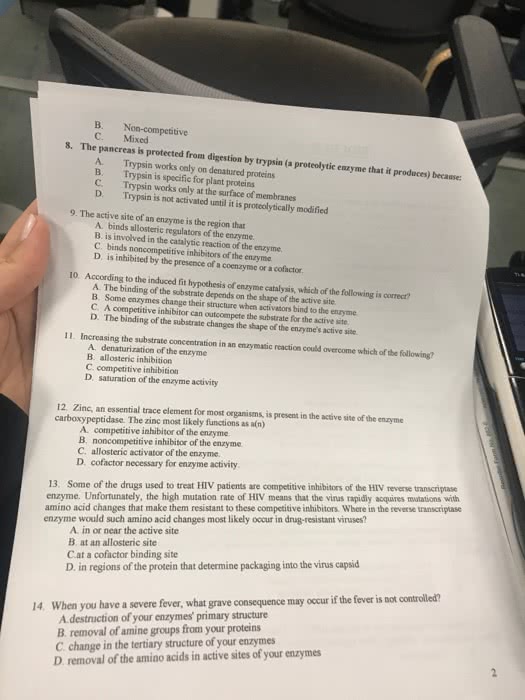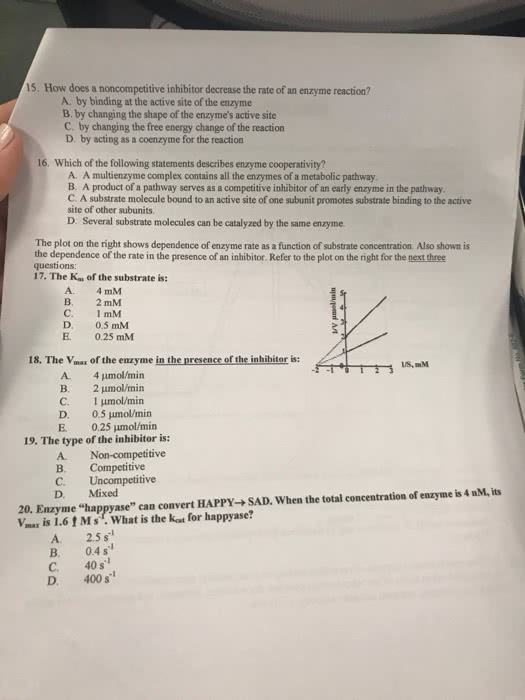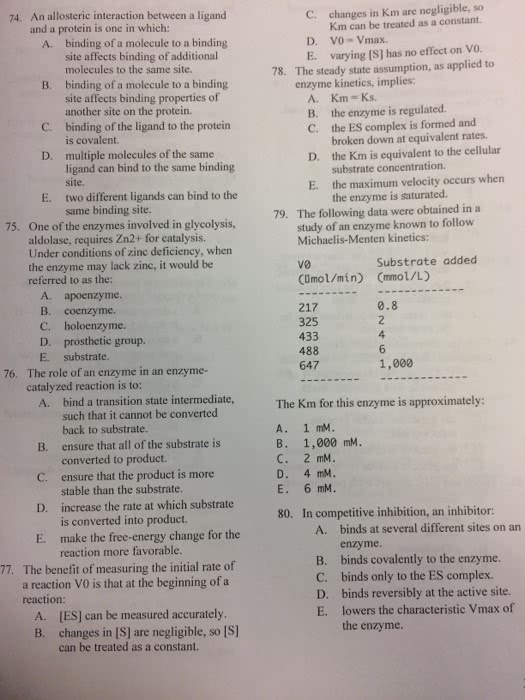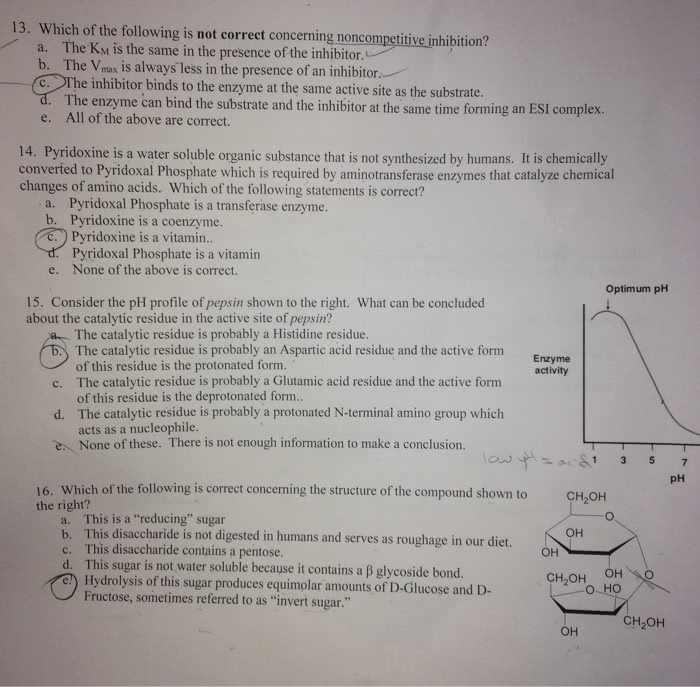CHE 211 Study Guide - Final Guide: Transferase, Energy Harvesting, Nicotinamide

Organic Chemistry 2: Enzymes
Cofactors & Coenzymes
Simple enzymes are whose functions form consist only proteins with tertiary structures;
many enzymes are not functional all by themselves enzymes such as these are called
apoenzymes
Apoenzyme is the protein portion of an enzyme that needs a co-factor to function in
catalysis
Active enzyme/Holoenzyme:
▪ Polypeptide portion of enzyme (apoenzyme)
▪ Nonprotein prosthetic group (co-factor)
Cofactors are usually a small organic molecule or
metal ion;
Cofactors are bound to the enzyme for it to
maintain the correct configuration of the active site
o Organometallic compounds
o Metal ions
o Organic compounds
Part B of the figure to the right shows what happens when a solution of Cu2+ ions is
added to the reaction containing the enzyme and the substrate the
presence of the Cu2+ ion bind to the Apoenzyme allows the active
site to take on the correct configuration and bind with the substrate,
and thus catalyze the reaction
When the cofactor is a small organic molecule, it is known as a co-
enzyme
Coenzymes
A coenzyme is required by some enzymes
o An organic molecule bound to the enzyme by weak
interactions/hydrogen bonds
o Most coenzymes carry electrons or small groups; it serves as a
donor/acceptor of electrons or a functional group in a
reaction
o Many have modified vitamins in their structure
The figure to the left shows how a co-enzyme accepts a functional
group from one substrate and donates it to a second substrate in a
reaction catalyzed by transferase
find more resources at oneclass.com
find more resources at oneclass.com
Document Summary
Simple enzymes are whose functions form consist only proteins with tertiary structures; many enzymes are not functional all by themselves enzymes such as these are called apoenzymes. Apoenzyme is the protein portion of an enzyme that needs a co-factor to function in catalysis. Active enzyme/holoenzyme: polypeptide portion of enzyme (apoenzyme, nonprotein prosthetic group (co-factor) Cofactors are usually a small organic molecule or metal ion; Cofactors are bound to the enzyme for it to maintain the correct configuration of the active site: organometallic compounds, metal ions, organic compounds. When the cofactor is a small organic molecule, it is known as a co- enzyme. The figure to the left shows how a co-enzyme accepts a functional group from one substrate and donates it to a second substrate in a reaction catalyzed by transferase. Nicotinamide adenine dinucleotide in oxidized and reduced forms. Nad+ is an example of a co-enzyme that is of critical importance in oxidation/reduction of cellular energy harvesting processes.




